6 of the creepiest abandoned places in Romania
Discover RomaniaThe world is full of creepy abandoned places, and Romania is no different. But a real daredevil never backs down from an adventure. Not even from one that is shrouded in mystery and forgotten by time. Here are some of the creepiest abandoned places in Romania, some of which can still be visited (though not for long).
Ada Kaleh, the Atlantida of the Danube
Ada Kaleh was an island located on the Danube River, approximately 3 kilometers away from Orșova. The island was known as a free port and a smuggler's cove, and it was mainly inhabited by Turks, but other ethnicities also lived there. People have lived here ever since antiquity, and it was mentioned in official documents for the first time in 1430, by the Teutonic Knights. In one of their official reports, they mentioned it under the name of "Saan Island", with a population of 216.
The island played a huge part in the war between the Habsburg Monarchy and the Ottoman Empire, due to its strategic position. In 1689, the Habsburg Monarchy built a Vauban-type fort on the island, and that fort became the main reason of dispute for the two empires. Over the years, the island was successively occupied both by the Ottoman Empire and the Habsburg Monarchy, until it passed over to the Ottoman Empire in 1739 with the Treaty of Belgrade.
The island was conquered again by the Habsburg Monastery in 1789, but they had to return it with the Treaty of Sistova in 1791, which put an end to the war and caused the island to lose its military significance. In 1878, the island was totally forgotten during the peace talks of the Congress of Berlin, and it remained a de jure Ottoman territory, although de facto Austria-Hungary declared its sovereignty over the island in 1913. After World War I, Romania declared its independence in 1919 and strengthened its claim on the island with the Treaty of Trianon in 1920. On 24th of July, 1923, the Republic of Turkey ceded Ada Kaleh to Romania following the Treaty of Lausanne.
Ada Kaleh Island. Photo source: Ziarul Financiar.
Ada Kaleh was a beloved touristic spot due to its reduced prices on Turkish delicacies, jewelry, and tobacco. Most of its inhabitants made a living out of cultivating tobacco and fishing, but the place was also renowned for its roses, which were used to make oil and perfume.
In 1964, the Iron Gates project was initiated, and the construction of a dam on the Danube River began, at the border of Romania and Serbia. During the construction, some of the buildings on Ada Kaleh were moved to the nearby Simian Island, including part of the masonry of the fortress' catacombs, the mosque, the bazaar, and the graveyard. Most of the population decided to emigrate to Turkey, but some citizens decided to relocate to Dobruja. The construction project completely flooded the island, and today it lays underwater, with parts of its buildings still there, trapped in time. It is said that sometimes if the water is clear enough, you can spot some of its buildings.
The Constanta Casino
The Constanta Casino was initially commissioned by King Carol I, and it was built between 1904 and 1910 in an Art Nouveau style. Located on the shore of the Black Sea, the building was once the symbol of Romania's main port, Constanta. Until World War II, it was the main seaside meeting location for wealthy tourists who enjoyed gambling, and in 1914 the casino even hosted a royal gala for the Russian Imperial Family.
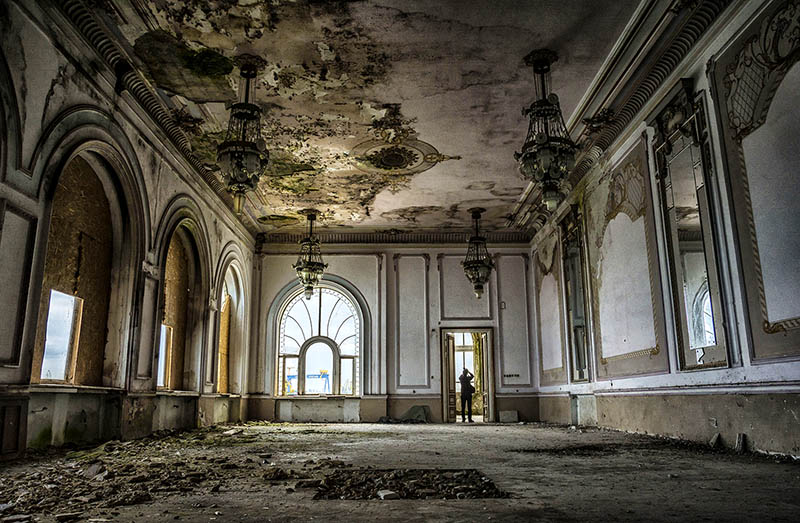
Inside the Constanța Casino
During World War II, the casino was briefly used as a hospital, and during the reign of Nicolae Ceausescu, it was turned into a restaurant. Over the years, the maintenance costs of the building became increasingly more expensive, and it was finally closed in 1990. The last major restoration took place in 1988, and today the Constanta Casino is closed to the public in order to prevent injury and to protect it from thieves.
Geamana, a village submerged in toxic waste
If you were to travel 40 years back in time, in the middle of the Apuseni Mountains you would find the beautiful village of Geamana and its population of 1,000 living in approximately 400 houses. Today, all that's left is the church tower, 20 lucky houses, and a sea of toxic waste.
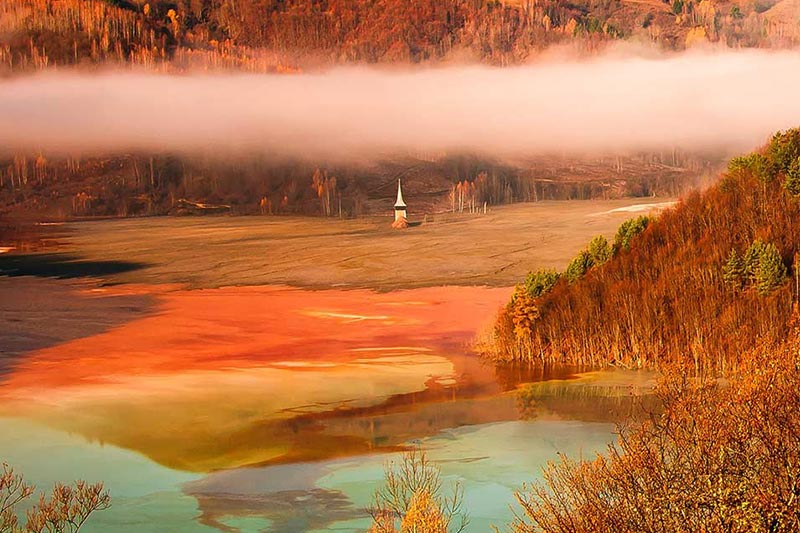
Toxic waste covering the village
In 1977, Nicolae Ceaușescu decided to mine the copper in Roșia Poieni, the largest copper deposit in Europe at the time. Some of the locals can still remember the first signs of the disaster that was going to strike their village:
"The first bad omen was when the cherry trees started dying. They must have sensed the poison that was underground at the time. This happened at the end of 1970. Then, the creeks started turning red, as if someone was pouring blood in them".
In only a couple of years, the whole village was flooded by the toxic waste. Most of the villagers were forced to evacuate and relocate, but around 20 of them still live in the village, and they are glad that their houses were located on higher ground.
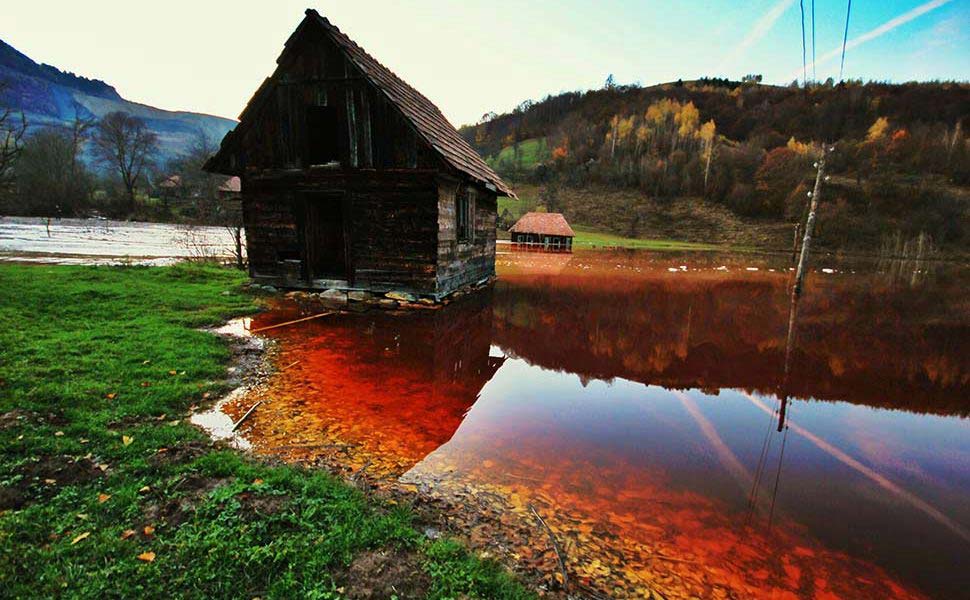
Geamana Village house
Today, the toxic waste keeps slowly rising, and it has reached the eaves of the church roof. In a couple of years, the last symbol of what was once a remote village will sink in a sea of pollution, with only the photographs and the memories of the locals to serve as testimony for this corner of the world.
Chiajna, the haunted monastery
The construction of the Chiajna Monastery began during the reign of Alexander Ypsilanti, in 1780, and was completed 10 years later by the Phanariote Nicholas Mavrogenes, in 1790. Soon after its completion, the church was bombarded by the Turks who believed that it was a fortress. All the documents that were inside were destroyed by fire, yet the church resisted the blasts. Soon after, the monastery was abandoned due to a plague that erupted, and no one has ever returned to restore it.

Chiajna Monastery. Photo credit: Alex Iacob
Even though the building resisted the bombardment of the Turks, after the 1977 earthquake the bell tower collapsed and was carried away by the stream of the Dambovita River. According to the locals, on the nights with a full moon, the great bell can be heard pounding, and many claim that the church is haunted.
The Catacombs of Brasov
Brasov is a city renowned for its beautiful medieval ambiance, but not many tourists know about the catacombs of the city. It is unknown how long ago they were built, but it is speculated that they are part of an underground system that connected the Medieval Citadel of Brasov to all of the defense towers and bastions, as well as to other buildings in the city, such as the St. Bartholomew Church. One of the main entrances is located near the walls of the city, on the "Behind the Walls" Alley.
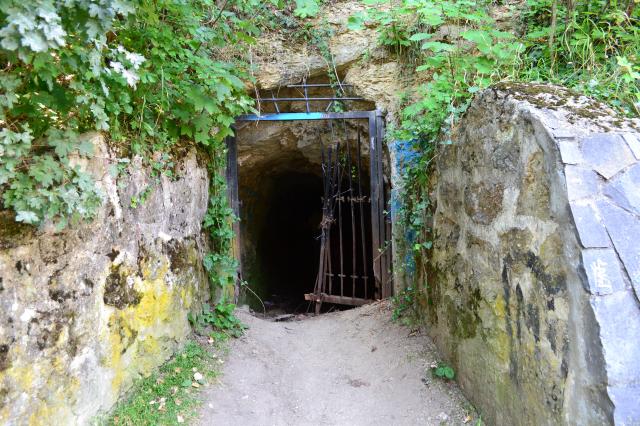
The Catacombs of Brasov. Photo source: Monitorul Expres
There are also numerous tunnel entrances close to the Council Square, and while many of them have not been officially mapped, the locals who explored them claim that some of them are linked to the Art High School, and even to the Black Church. It is believed that initially, the catacombs in the Council Square were designed as temporary warehouses for supplies that would be used in case of a siege on the citadel. What is even more intriguing is the fact that many of these catacombs were discovered by accident. In the early 1950s, a huge perfectly preserved blue whale was brought into town, but due to its weight, it crashed in one of the covered tunnels. Another tunnel was discovered in 1963-1964 when a Russian truck crashed into an area near the History Museum, and a third opening was discovered when the pavement from the Council Square was replaced, between 1987 and 1988.

Inside the catacombs. Photo source: Cocoon.ro
A local legend claims that during World War II, one of the catacombs was used to keep German prisoners and that both of the entrances were sealed off.
Although there are many legends surrounding the catacombs of Brasov, historians are rather skeptical when it comes to pinpointing their exact purpose and usability throughout the years. The only thing that we can be certain of is that there are many other tunnels yet to be discovered.
The Caritas Hospital
Located in the heart of Bucharest, the Caritas Hospital is one of the oldest hospitals in the city. The first section of the building was constructed in 1880, in order to protect homeless women, children, and families. 11 years later it was turned into an ambulatory care unit, and during the First World War, it was turned into a hospital under the patronage of Princess Marie.
In 1933, the Jewish Community of Bucharest established here the "New Maternity", which was attended by King Carol II and Queen Elisabeth of Greece, and between 1936 and 1940 three new sections were opened. In 1941, on the brink of World War II, the Romanian military transformed the building into a war hospital for the second time, and the state authorities nationalized it in 1948. Following the nationalization, some of the best medics in Romania moved their cabinets here, and the building became a University's Hospital.
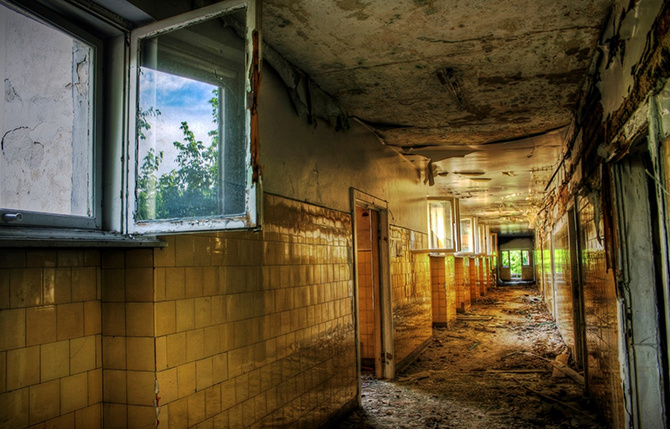
Inside Caritas Hospital. Photo source: Vice.
The hospital continued to function until 2005 when it was returned to the "Caritatea" Charity Organization, but only 6 years later the hospital was permanently closed and all the personnel together with the patients were moved without notice in other hospitals. Today, the hospital is completely abandoned and many consider it a pesthole and find it ironic that a place which was meant to help cure people might now sicken them.
Do you know a place that should be included on our list? Let us know in the comments below!
